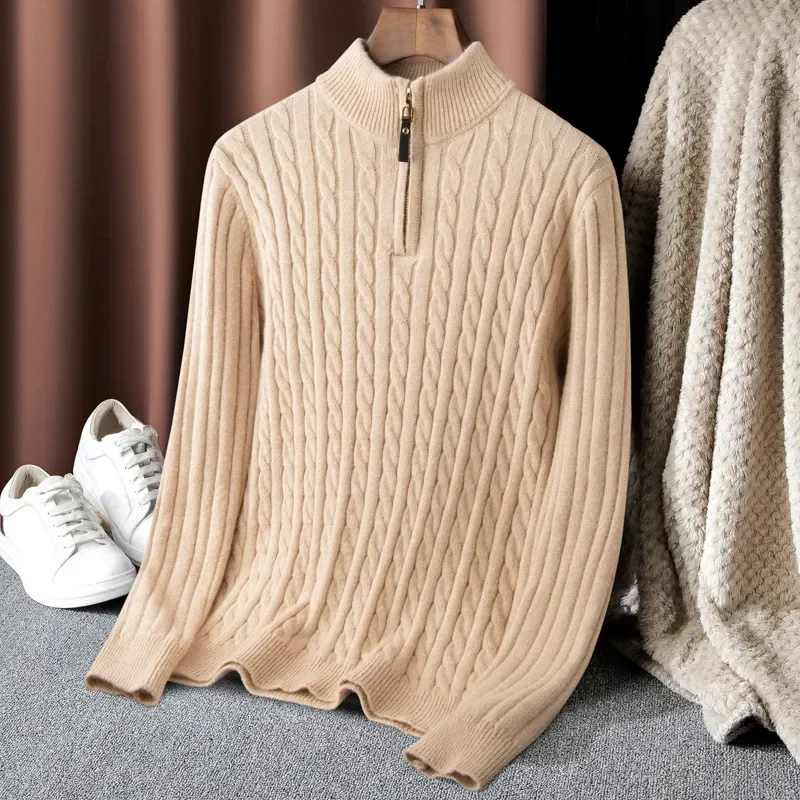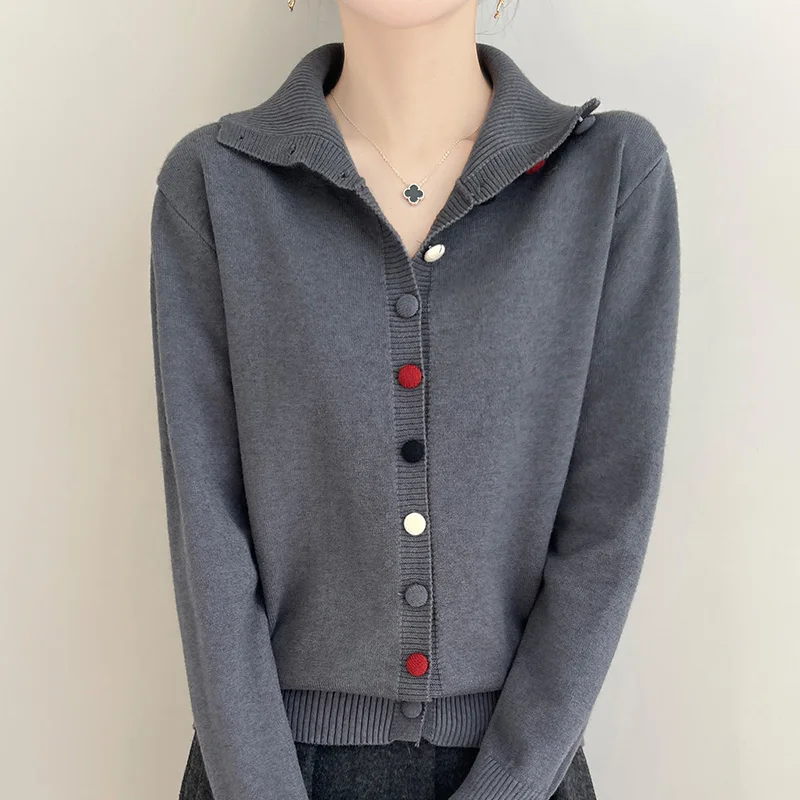Understanding Cashmere Ply: The Foundation of Luxury
When you invest in cashmere, understanding the term “ply” becomes essential to making an informed choice. In the world of cashmere, ply simply refers to the number of individual yarn strands twisted together to create a single, thicker yarn. This structural element fundamentally shapes how your cashmere garment will look, feel, and perform over time.
The ply count directly influences several key properties:
- Thickness – Higher ply means a thicker, more substantial fabric
- Warmth – More strands generally provide better insulation
- Drape – How the fabric hangs and moves on your body
- Durability – Multiple strands can enhance strength and resilience
It’s important to note that ply refers to construction rather than inherent quality. A well-made 2-ply cashmere from excellent raw materials can be superior to a poorly made 4-ply product from inferior fibers.
When you’re investing in luxury cashmere pieces that you’ll treasure for years, understanding these comprehensive cashmere yarn weight classifications helps you select garments that truly match your needs. The relationship between cashmere ply and thickness creates the foundation for how a garment will perform in various situations.
2-Ply Cashmere: Elegant Versatility
2-ply cashmere consists of two individual strands of cashmere yarn twisted together to create a single thread. This construction method creates a fabric with distinctive characteristics that make it ideal for certain uses and climates.
Key characteristics of 2-ply cashmere include:
- Weight profile: Typically ranges from 5-7 ounces per square yard (170-240 grams per square meter), creating a lightweight fabric that doesn’t overwhelm
- Warmth-to-weight ratio: Excellent thermal efficiency without bulk, offering surprising warmth despite its lighter weight
- Drape qualities: Creates a fluid, elegant drape that moves naturally with the body
- Breathability: Superior air circulation helps regulate body temperature and prevents overheating
- Tactile experience: Soft and light against the skin, with a refined feel
2-ply cashmere typically falls into a more accessible price range compared to higher plies, making it an excellent entry point into quality cashmere. Its versatility shines in temperatures between 45-65°F (7-18°C), making it perfect for indoor settings, transitional seasons, or milder winter climates.
This weight excels in garments like lightweight sweaters, cardigans, scarves, and pieces intended for layering. The lightweight and heavyweight cashmere guide shows how 2-ply options provide exceptional versatility for everyday wear. For elegant examples, our women’s cashmere pullovers showcase the refined drape and elegant versatility of 2-ply construction.
4-Ply Cashmere: Sumptuous Luxury
4-ply cashmere represents a more substantial investment in both material and luxury experience. This construction twists four individual strands of cashmere yarn together, creating a significantly denser, more substantial fabric with distinctive properties.
Key characteristics of 4-ply cashmere include:
- Weight and density: Typically ranges from 9-12 ounces per square yard (305-407 grams per square meter), creating a substantial fabric with pronounced presence
- Insulation properties: Exceptional warmth retention makes it suitable for genuinely cold environments
- Structural integrity: Maintains its shape well with less stretching or sagging over time
- Reduced breathability: The denser construction reduces air circulation, making it less suitable for warmer environments
- Tactile experience: Provides a rich, sumptuous hand-feel with noticeable weight and substance
4-ply cashmere commands a higher price point due to the additional raw material required. It performs best in temperatures between 25-45°F (-4 to 7°C), making it ideal for cold winter climates or as outerwear.

This weight shines in garments like heavy sweaters, structured cardigans, and cold-weather accessories where insulation is paramount. For outstanding examples of this luxury category, explore our collection of men’s cashmere pullovers, which demonstrates the substantial warmth and refined structure that 4-ply construction provides.
Side-by-Side Comparison: 2-Ply vs. 4-Ply Cashmere
To help you make an informed decision between 2-ply and 4-ply cashmere, this comprehensive comparison highlights the key differences across critical attributes:
| Attribute | 2-Ply Cashmere | 4-Ply Cashmere |
|---|---|---|
| Thickness | Lighter, finer fabric (5-7 oz/yd²) | Substantially thicker (9-12 oz/yd²) |
| Warmth | Moderate warmth, good for 45-65°F | Superior insulation, ideal for 25-45°F |
| Durability | Good with proper care, may show wear sooner | Enhanced durability, better resistance to wear |
| Drape | Fluid, elegant movement with body | More structured with defined silhouette |
| Breathability | Excellent air circulation | Limited breathability due to density |
| Price | More accessible entry point | Premium price reflecting material usage |
| Best Uses | Indoor wear, layering, transitional seasons | Cold weather, outerwear, winter statement pieces |
Your individual preference for garment weight plays a significant role in which ply you’ll prefer. Some people love the substantial feel of a heavier garment, while others prioritize lightness and versatility. Climate considerations are equally important—those in milder regions might rarely need the extra warmth of 4-ply, while someone in a cold climate might find 2-ply insufficient for winter wear.
Understanding how different cashmere yarn weights from lace to super bulky affect the final garment can help inform your decision. The relationship between fine and heavy gauge cashmere also influences how the ply count translates to the finished product’s feel and performance.
Beyond Ply: What Really Determines Cashmere Quality
While ply count is an important structural consideration, it’s not the primary indicator of cashmere quality. A 2-ply garment made from superior fibers can far exceed the quality of a 4-ply item made from inferior materials.
True quality determinants include:
Fiber length: Longer fibers (ideally exceeding 36mm) create stronger yarns with less pilling. When shorter fibers are used, even in higher plies, the result is often a garment that pills quickly and loses its shape.
Fiber diameter/fineness: Measured in microns, with premium cashmere typically under 16 microns. This determines the softness and luxurious feel—regardless of ply count.
Geographic origin: Different regions produce cashmere with varying characteristics based on climate, altitude, and goat diet. The best producing regions maintain strict standards for fiber collection and processing.
Processing techniques: Gentle processing preserves the fiber’s integrity, while harsh chemical treatments can damage even the finest raw materials.
Harvesting methods: Combing (rather than shearing) yields better quality fibers by collecting only the naturally shed undercoat.

When evaluating quality, look beyond the ply count to observe evenness of knitting, seam construction, and overall finishing. High-quality cashmere will feel incredibly soft but not overly fuzzy—excessive initial softness can actually indicate shorter fibers that will pill quickly.
To understand how geographic factors influence quality, our guide on cashmere sourcing, quality, and regional differences provides valuable insights. For examples of premium quality across different constructions, explore our cashmere sweater collection, where quality fiber selection takes precedence over simply increasing ply count.
How to Choose: Matching Ply to Your Lifestyle Needs
Selecting the right cashmere ply depends largely on how you plan to use the garment and your personal circumstances. Consider these factors when making your choice:
Climate considerations:
* For cold regions (average winter temperatures below 40°F/4°C), 4-ply cashmere provides necessary insulation.
* For mild climates or heated indoor environments, 2-ply cashmere offers comfort without overheating.
Intended use:
* Office environments typically favor 2-ply cashmere that won’t overheat in indoor heating.
* Outdoor activities in winter may require the extra warmth of 4-ply.
* Travel pieces benefit from 2-ply’s versatility and packability.
Layering intentions:
* If you prefer layering multiple pieces, 2-ply works excellently without adding bulk.
* If you prefer a single, substantial layer, 4-ply provides stand-alone warmth.
Budget optimization:
* One premium 4-ply piece for the coldest days plus several 2-ply pieces for regular wear creates a versatile collection.
* Starting with a high-quality 2-ply in a versatile color offers excellent cost-per-wear value.
Cashmere Wrap Sweaters, Women's Cashmere Pullovers
$75.89 Select options This product has multiple variants. The options may be chosen on the product pageCashmere Cable Knit Sweaters, Women's Cashmere Pullovers
Price range: $111.82 through $112.93 Select options This product has multiple variants. The options may be chosen on the product pageCropped Cashmere Sweaters, Women's Cashmere Pullovers
$155.77 Select options This product has multiple variants. The options may be chosen on the product page- Price range: $102.02 through $109.37 Select options This product has multiple variants. The options may be chosen on the product page
Oversized Cashmere Sweaters, Plus Size Cashmere Sweaters, Women's V-Neck Cashmere Sweaters
$136.87 Select options This product has multiple variants. The options may be chosen on the product page- Price range: $108.11 through $130.03 Select options This product has multiple variants. The options may be chosen on the product page
For additional guidance on finding your perfect match, our guide on choosing the right cashmere ply covers specific scenarios in greater detail. Both ply options are beautifully represented in our cashmere turtleneck collection, allowing you to compare different weights for your specific needs.
The Relationship Between Ply, Gauge and Weave
Understanding cashmere fully requires looking beyond just ply count to consider how gauge and weave pattern interact with ply to create the final fabric.
Gauge refers to the number of stitches per inch in knitted cashmere. This measurement works in tandem with ply to determine the final fabric’s characteristics:
- High gauge (fine knit) + 2-ply = Lightweight, fluid fabric ideal for draping
- High gauge + 4-ply = Dense, substantial fabric with excellent structure
- Low gauge (looser knit) + 2-ply = More open, breathable fabric with casual texture
- Low gauge + 4-ply = Chunky, dramatic texture with maximum warmth
Weave patterns further influence the fabric’s properties:
- Jersey knit: Smooth, flat surface that showcases cashmere’s natural luster
- Rib knit: Adds elasticity and texture while enhancing warmth
- Cable knit: Creates dimensional texture and traps additional air for insulation
- Intarsia/jacquard: Creates patterns that can add visual interest but may affect drape
The interaction between loose and tight knit cashmere demonstrates how the same ply count can produce remarkably different results depending on gauge and knitting technique. When evaluating cashmere garments, consider all three factors—ply, gauge, and weave—to fully understand how the piece will perform.
Care Essentials: Maintaining Quality Across All Plies
Proper care is essential for preserving the quality and extending the lifespan of your cashmere, regardless of ply count. Following these guidelines will help maintain your investment pieces:
Washing recommendations:
* Hand wash using lukewarm water and a mild detergent specifically formulated for cashmere or wool
* Gently squeeze water through the garment without wringing or twisting
* For 4-ply pieces, pay special attention to ensuring the detergent fully rinses out from the denser fabric
Drying techniques:
* Lay flat on a clean towel away from direct heat or sunlight
* Reshape while damp, particularly important for 4-ply garments which may take longer to dry
* Never hang cashmere to dry as this can stretch the fibers
Storage methods:
* Store clean, fully dry garments folded in breathable containers
* Use cedar blocks or lavender sachets rather than mothballs
* 4-ply garments may need more storage space due to their greater bulk

Addressing pilling:
* Light pilling is normal, especially with 2-ply cashmere
* Use a cashmere comb or fabric shaver very gently to remove pills
* 4-ply cashmere typically pills less initially but still requires attention
For detailed step-by-step instructions, our guide on the best way to clean cashmere sweaters provides comprehensive care advice. Our cashmere cardigan collection includes pieces in various plies, all of which benefit from proper maintenance to preserve their luxurious qualities.
Frequently Asked Questions About Cashmere Ply
Does higher ply always mean better quality cashmere?
No. Ply count indicates thickness and construction method, not fiber quality. A well-made 2-ply garment from superior fibers will outlast and outperform a 4-ply garment made from inferior materials.
Is 2-ply cashmere inferior to 4-ply?
Not at all. 2-ply and 4-ply serve different purposes. 2-ply excels in versatility, drape, and comfortable wear across multiple seasons, while 4-ply provides maximum warmth for cold conditions.
How can I verify ply count when shopping?
Quality brands will specify ply count in product descriptions. Physical inspection can be tricky, but 4-ply typically feels noticeably heavier and denser when held.
Does blended cashmere affect ply considerations?
Yes. Blends containing silk, wool, or synthetic fibers will perform differently than pure cashmere at the same ply count. Understanding whether a garment is 100 percent cashmere or a blend like 70 percent wool and 30 percent cashmere helps set appropriate expectations for performance.
Why does similar ply cashmere vary so much in price?
Price variations reflect differences in fiber quality (length and fineness), craftsmanship, brand positioning, and exclusivity. Two 2-ply sweaters can differ dramatically in quality and price point based on these factors.
Making Your Investment: The Long-Term Value Perspective
Approaching cashmere as an investment rather than a casual purchase shifts focus to long-term value rather than initial cost. Quality cashmere can last for decades with proper care, making the cost-per-wear calculation highly favorable compared to lower-quality alternatives.
When building a versatile cashmere wardrobe:
- Start with a high-quality 2-ply piece in a versatile neutral color that spans seasons
- Add a 4-ply piece for cold weather when budget permits
- Focus on classic styles rather than trendy cuts that quickly become dated
- Consider versatility—pieces that can be dressed up or down maximize wear opportunities
The environmental impact of cashmere production makes investing in quality pieces even more important. Fast-fashion cashmere often uses shorter fibers that pill quickly and wear out, creating waste. In contrast, premium cashmere from Estate Cloth uses only the highest quality fibers that maintain their beauty for years.
Our cashmere wool cardigan collection demonstrates how thoughtfully constructed garments create lasting value through their extended lifespan and timeless design. By selecting the right ply for your specific needs and investing in quality, you create a cashmere collection that provides luxury, comfort, and satisfaction for years to come.







